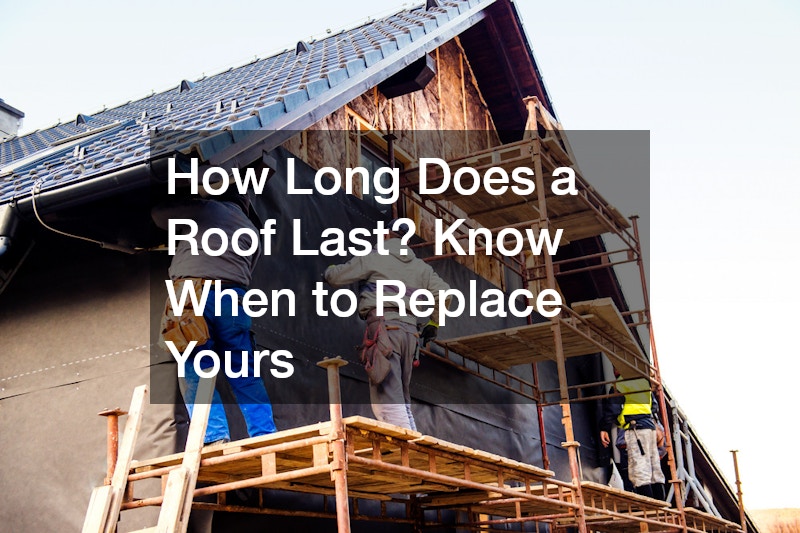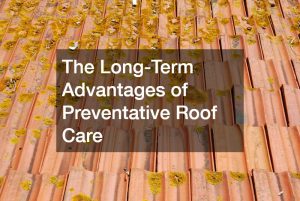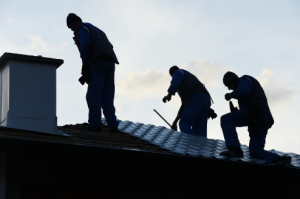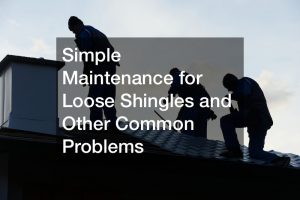How Long Does a Roof Last? Know When to Replace Yours
Understanding the lifespan of a roof is essential for homeowners and property managers. Various factors influence how long a roof will last, and knowing when to replace it can save money and prevent property damage. This article explores common questions and critical considerations when assessing roof longevity.
Factors Affecting the Longevity of a Roof
Materials Used in Roofing
The type of material used is one of the most significant factors in determining the lifespan of a roof. Asphalt shingles, for instance, have a lifespan of about 20 to 30 years, while metal roofs can last 50 years or more.
Tile roofing, on the other hand, offers durability spanning over 100 years with proper maintenance.
The material chosen for a roof considerably impacts its susceptibility to environmental conditions. For example, metal roofs can withstand severe weather, which maintains their structural integrity longer than other materials. Each material’s resistance to factors like wind, water, and fire plays a crucial role in how long it lasts.
Making an informed choice about roofing materials involves weighing the long-term benefits against initial costs. While asphalt shingles are more budget-friendly upfront, materials like metal and tile might require a larger investment but offer significant longevity and protection over time. Understanding the strengths and weaknesses of each material aids in forecasting the maintenance and durability expectations for a roof.
Environmental Impact
Weather conditions and environmental factors play a crucial role in roof durability. Roofs in regions with extreme weather conditions, such as intense sunlight, heavy rain, or snow, typically degrade faster. Prolonged exposure to these elements can cause roofing materials to deteriorate, leading to a shorter lifespan.
Geographical location also significantly impacts roof longevity. Coastal areas, with high salt content in the air, can experience rust issues with metal roofing, whereas roofs in regions prone to hurricanes or tornadoes may face structural challenges. Additionally, the altitude and shade cover a property has can influence the wear rate of roofing materials.
Environmental impacts can be mitigated with regular maintenance and by choosing materials suitable for the prevailing local conditions. Investing in high-quality, weather-resistant materials will provide better protection and extend the life of the roof. Consulting with a roofing expert equipped with regional knowledge can be invaluable in selecting the appropriate materials and strategies for prolonging roof life.
How to Tell When Your Roof Needs to be Replaced
Visible Signs of Wear and Damage
Homeowners should regularly inspect their roofs for visible signs of deterioration. One of the most common indicators is the presence of missing or curling shingles, which can compromise the roof’s protective barrier. Additionally, leaks, especially in the attic, often signify that the roofing system’s integrity has been compromised.
Other visible signs include granules from shingles washing off into gutters or visible wear around chimneys, vents, and skylights. Such symptoms can indicate that the roof is nearing the end of its lifecycle. Regularly checking for these signs can help address potential issues before they become more significant problems.
Knowing when to replace a roof involves not just noticing damage but also understanding the age and material-specific lifespan of your roofing system. As roofs age, the frequency and extent of visible damage often increase, signaling the need for a replacement. Proactive inspections and addressing small problems promptly can help in mitigating larger, more costly repairs or replacements later on.
Professional Roof Inspections
Regular professional inspections are essential in determining a roof’s condition. Roofing professionals are trained to identify less obvious signs of wear, ensuring potential issues are addressed before they escalate. During inspections, professionals check for structural integrity issues and subtle signs of depreciation that might not be visible to the untrained eye.
The importance of scheduling professional evaluations cannot be overstated, as these inspections provide insights beyond what a simple visual scan might reveal. Inspectors look for internal signs of damage, such as moisture intrusion and attic insulation integrity. Regular inspections contribute significantly to understanding the timing of a necessary roof replacement.
The Costs Involved in Replacing a Roof
Budgeting for Roof Replacement
Replacing a roof can be a significant financial investment. Understanding the costs involved, including potential additional expenses, is crucial for effective budgeting. Aside from material and labor costs, potential expenses include permits, removal of old roofing, and structural repairs.
Preparing a comprehensive budget for roof replacement ensures homeowners can manage the entire process without financial strain. It’s important to obtain multiple quotes from reliable contractors to compare prices and included services. Additionally, setting aside a contingency fund for unexpected issues can prevent delays in the project.
Choosing the Right Roofing Contractor
Selecting a reputable contractor is critical to ensuring quality workmanship and obtaining the best value. Start by looking for contractors with verified credentials, solid references, and positive reviews from past clients. A reliable contractor should provide a detailed written estimate, outlining all anticipated costs and the scope of work involved.
It’s essential to choose a contractor who is both insured and bonded, providing protection against any potential accidents or liabilities. A good contractor will also offer a warranty for their work and the materials used, adding an extra layer of security for the homeowner. Taking the time to do proper due diligence can significantly impact the final outcome and satisfaction with the roofing project.
Recognizing when a roof needs to be replaced is crucial for property maintenance. By understanding the factors that affect roof longevity, the signs of necessary replacement, and the associated costs, homeowners can make informed decisions to protect their investment. Regular maintenance and professional advice are key to ensuring the long-term health of a roof.









